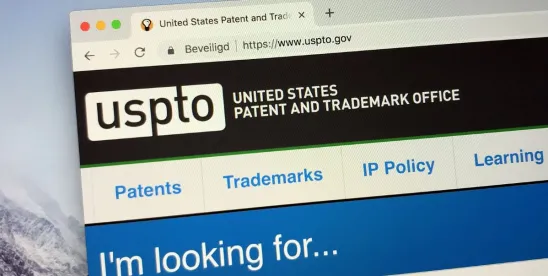On July 31, 2025, the acting Director of the United States Patent and Trademark Office (USPTO) published a memorandum making a significant change in Patent Trial and Appeal Board (PTAB) inter partes review (IPR) practice and procedures.
Effective September 1, 2025, the PTAB will no longer waive and will enforce the requirement under 37 C.F.R. § 42.104(b)(4) that requires petitioners specify where each element of the claim is found in the relied-upon prior art patents or printed publications. Critically, the memorandum clarifies that the “prior art patents and printed publications” that may form the basis of a ground of rejection in an IPR excludes Applicant Admitted Prior Art (AAPA), expert testimony, common sense, and any other evidence other than prior art patents or printed publications. According to the memorandum, this change aims to provide clarity to parties in IPR proceedings while aligning with recent Federal Circuit precedent.
Key Changes:
- Enforcement of Rule 104(b)(4): The PTAB will strictly enforce the requirement that IPR petitioners must identify within their petition the presence of each claim element in prior art patents or printed publications. This change supersedes previous memoranda from 2020 and 2022, which allowed for the waiver of this rule under certain circumstances and consideration of, among other things, AAPA to provide a claim element. AAPA is the Applicant’s own characterization of the prior art in the patent subject to the IPR proceeding. Previously, the PTAB had permitted petitioners’ use of AAPA so long as it was used “in combination” with one or more prior art patents or printed publications. The memorandum asserts that AAPA cannot be used to supply any claim element or otherwise form the “basis” of a ground of rejection.
- General Knowledge May Be Used In Certain Circumstances: While general knowledge, including AAPA, expert testimony, and common sense, can no longer be used to supply missing claim limitations, it may be cited and relied upon by petitioners to support a motivation to combine references or demonstrate the knowledge of a person having ordinary skill in the art.
- Federal Circuit Precedent: This change is driven by recent Federal Circuit decisions, which clarified the limitations on using AAPA as the basis for patentability challenges in IPR proceedings. Specifically, the Federal Circuit found that the USPTO's previous practice of combining AAPA with prior art patents or printed publications was inconsistent with the statutory framework authorizing IPR proceedings.
- Procedural Requirements: Beginning with petitions filed on or after September 1, 2025, petitioners must provide detailed identification of claim elements in the prior art patents or printed publications.
Stepping back, this memorandum represents another in a slew of recent memoranda issued by the USPTO that expressly supersede memoranda issued during the prior administration relating to post-grant proceedings. Also similar to recent memoranda and procedural changes, this change favors patent owners by preventing the use of the patentees’ own disclosures from being directly cited against their patents. However, despite this change, patentees should continue to carefully consider when it is beneficial to characterize and describe the prior art (or the state of the art) in patent applications and when such information is best omitted in favor of focusing on the advance in the art that forms the basis of the application.





 />i
/>i

